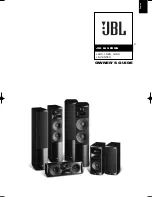
AVMOD16N1 - AVMOD16CCN
Rev. 03
09/09/2010
©
Velleman nv
4
4.
FCC/CE
a. Warning
This device generates and uses radio frequency energy and if not installed and used properly (=
in strict accordance with the manufacturer's instructions), may cause interference to radio and
television reception. It has been tested and found to comply with limits for a Class B digital device
in accordance with Part 15 of FCC Rules and CE I-ETS 300 440, which are designed to provide
reasonable protection against such interference in a residential installation.
However, there is no guarantee that interference will not occur in a particular installation. If this
equipment does cause interference to radio or television reception, which can be determined by
turning the equipment off and on, the user is encouraged to try to correct the interference by one
or more of the following measures:
1. Redirect the TV/radio antenna.
2. Relocate the receiver away from the TV/radio receiver.
3. Plug the receiver into a different power outlet so that the receiver is on a different branch of
the circuit.
4. If necessary, the user should consult the dealer or an experienced technician for additional
suggestions.
b. Notice
The user is cautioned that changes or modifications not expressly approved by the manufacturer
could void the user's authority to operate the equipment. Linear radio controls provide a reliable
communication link and fill an important need in portable wireless signalling. However, there are
some limitations which must be observed.
The radios are required to comply with FCC rules and regulations as Part 15 devices and CE I-ETS
300 440. As such, they have limited transmitter power and therefore limited range. A receiver
cannot respond to more than one transmitted signal at a time and may be blocked by radio
signals that occur on or near their operating frequencies.
5.
Description
Refer to the illustrations on page
2
of this manual.
A. Camera
5
Microphone
1
Protection cover
6
Antenna
2
IR LEDs
7
Channel switch
3
Stand connection
8
Power adapter plug
4
Power jack
9
Stand
B. Receiver
4
Channel switch
1
Antenna
5
A/V cable
2
Power LED
6
Power adapter
3
DC input jack
7
A/V connection cable
6.
Installing and connecting the camera
Refer to illustration
C
on page
2
of this manual.
•
Select a suitable mounting location, i.e. dry, dust-free with good air circulation and as little
vibrations as possible. Make sure there is a mains in the vicinity. Also, make sure the mounting
location is not screened off by reinforced concrete walls, mirrors, metal shelves etc. Remove any
appliance with a strong magnetic field causing interference and reducing the camera’s
performance.
•
To connect your camera, connect the plug of the power adapter (8) to the power jack (4) of the
camera. Insert the power adapter into the mains. The camera is now ready for use. Adjust the
image definition via the knurled screw at the lens. Make sure not to touch the lens.
7.
Installing and connecting the camera
Refer to illustration
D
on page
2
of this manual.
•
Install the receiver approximately 1m above ground for better reception. Make sure there is a
power outlet in the vicinity. Place the receiver on a stable surface only. Sensitive surfaces may
become damaged. Use a suitable underlay.
•
To connect your AV receiver, connect the AV cable (7) as depicted to a suitable monitor or TV
system (white plug = mono audio, yellow plug = video). Connect the plug of the power adapter
(6) to the DC input jack (3) of the receiver. Insert the power adapter into the mains. The receiver
is now ready for use.





































